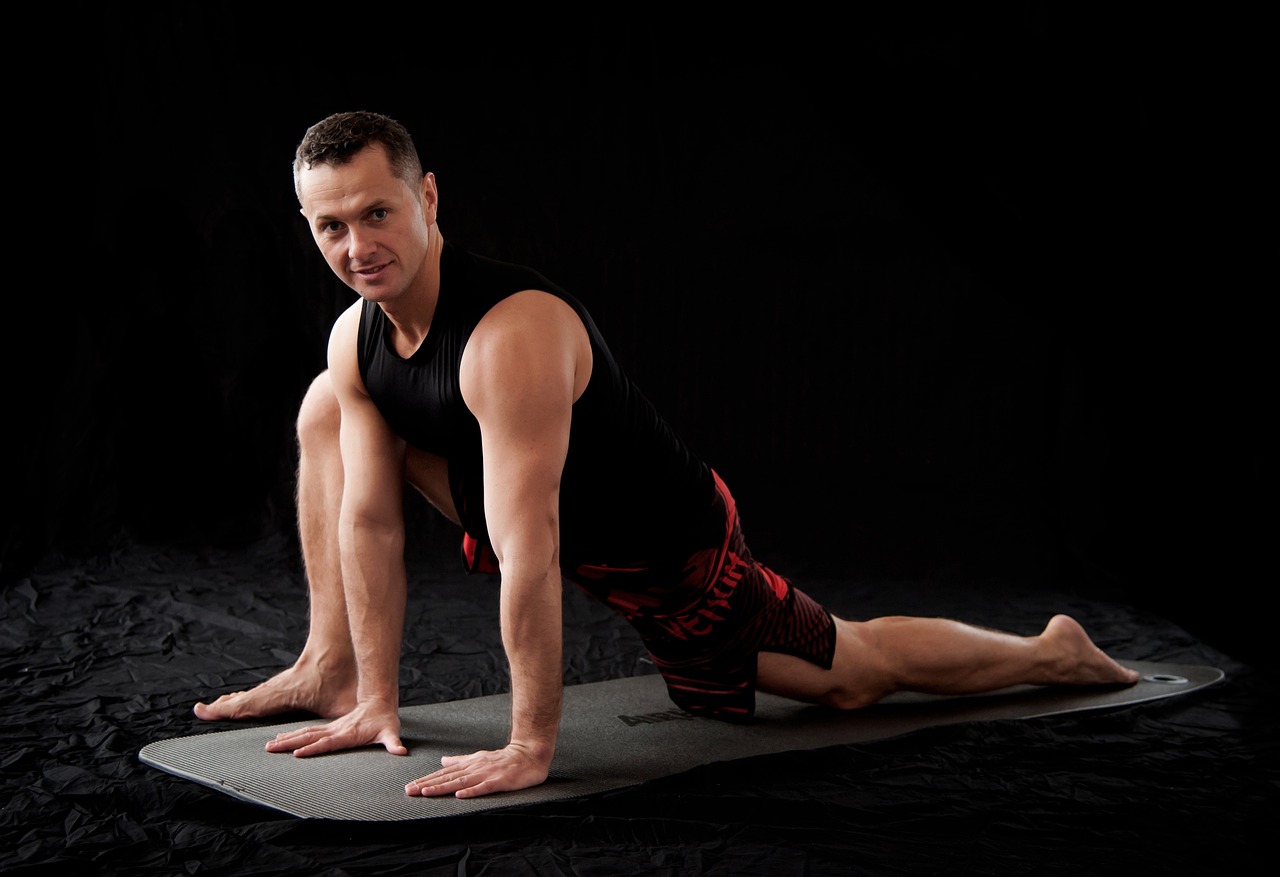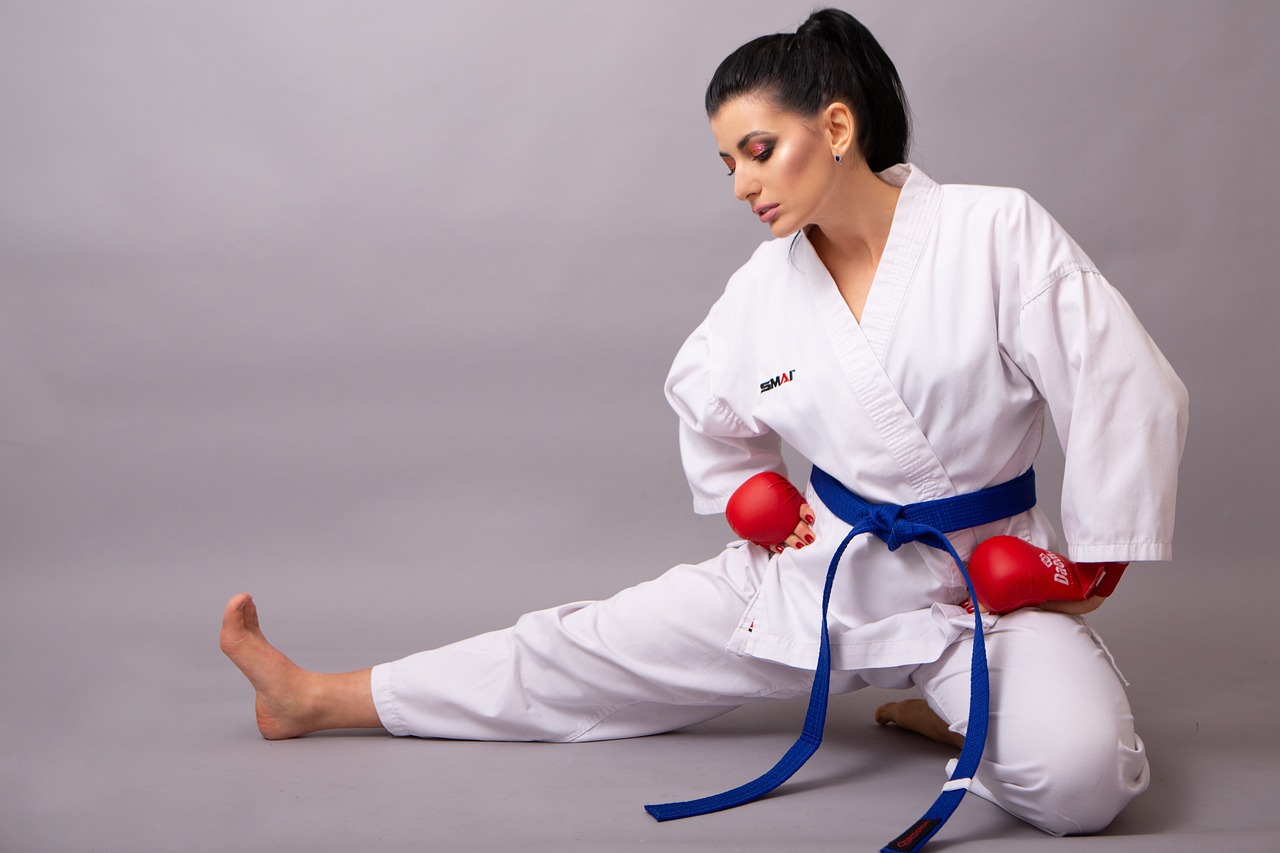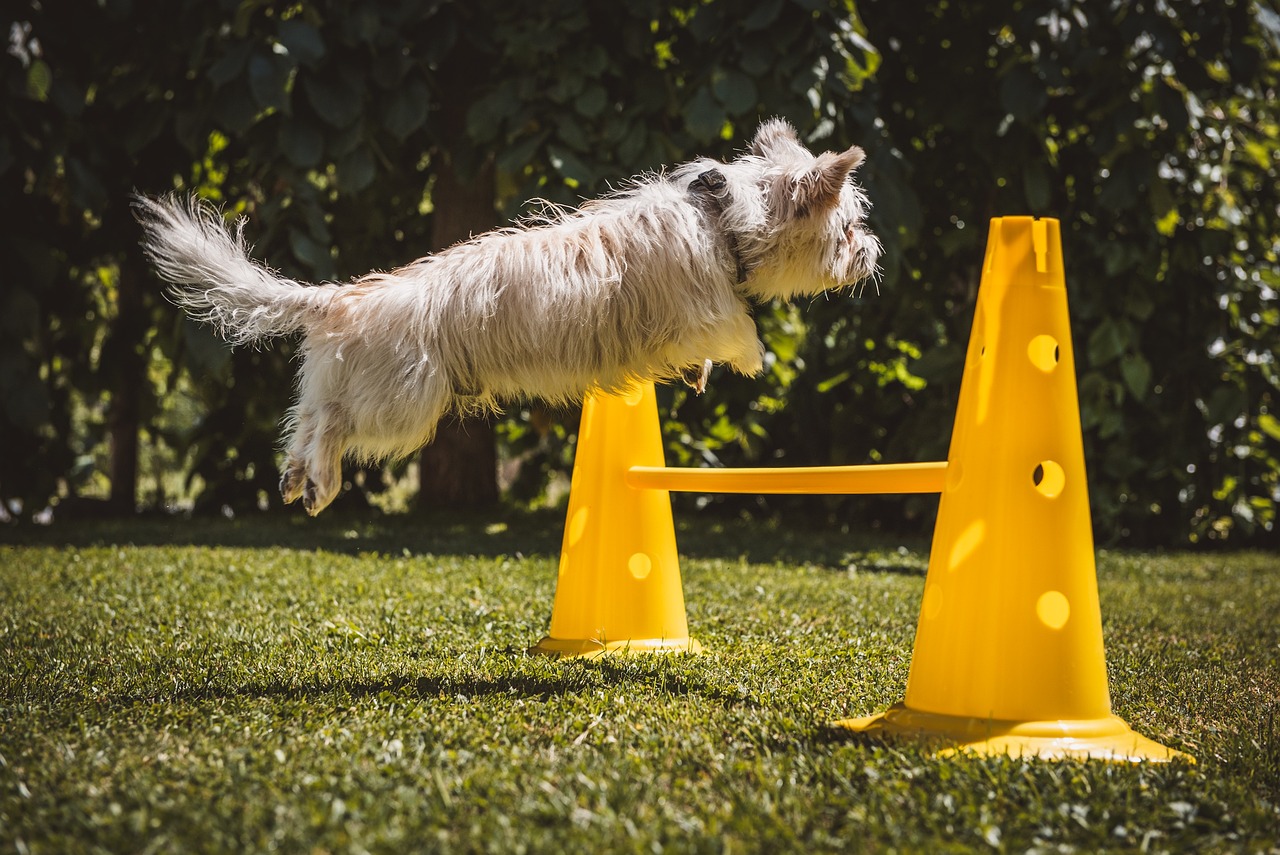Do You Need a Black Belt to Be Good at Self-Defense Techniques?
When it comes to self-defense, the question of whether you need a black belt often arises. Many people assume that achieving a black belt in any martial art equates to being a master of self-defense techniques. However, this assumption can be misleading. The reality is that while a black belt symbolizes a certain level of skill and dedication in martial arts, it does not automatically guarantee proficiency in real-world self-defense scenarios. In fact, many effective self-defense practitioners may never hold a black belt, yet they possess the skills and knowledge necessary to protect themselves in a crisis. So, what truly matters in self-defense? Let's dive into the nuances of practical skills, the myths surrounding black belts, and the essential techniques that anyone can learn to enhance their self-defense capabilities.
In the realm of self-defense, practical skills often outweigh formal rankings. Imagine being in a situation where you need to defend yourself; would you rather rely on your black belt status or your ability to react quickly and effectively? Real-world application is crucial. Self-defense is not about performing flashy techniques or demonstrating advanced forms; it's about being able to respond appropriately under pressure. Practical self-defense techniques focus on survival and adapting to unpredictable situations. This means that training should emphasize scenarios you might actually face, such as dealing with an aggressor, escaping a hold, or finding a way to de-escalate a confrontation. The ability to think on your feet and apply what you've learned in a meaningful way is what truly counts.
One of the most common myths is that achieving a black belt guarantees self-defense proficiency. While black belts are certainly commendable, they can sometimes create a false sense of security. The journey to black belt status often involves years of training, but this training might not always translate to effective self-defense skills. For instance, many black belts excel in sport martial arts, where the focus is on competition rather than real-world application. This brings us to the next point: the difference between sport and self-defense.
Sport martial arts are designed with competition in mind, where points are scored based on technique and strategy. In contrast, self-defense prioritizes survival and the ability to escape dangerous situations. In a sport setting, practitioners might train to score points or win matches, while in self-defense, the goal is simply to get away safely. This distinction is crucial when considering your training priorities. If you want to be prepared for real-life threats, your training should reflect that focus.
Sparring is a key component in many martial arts disciplines, providing practitioners with the opportunity to apply their skills in a controlled environment. However, its relevance to self-defense can vary significantly. While sparring can help develop timing, distance management, and reaction speed, it often lacks the unpredictability of a real-world encounter. In self-defense situations, factors such as environment, multiple attackers, or weapons can complicate matters. Therefore, while sparring is beneficial, it should be complemented with training that simulates real-life scenarios to ensure comprehensive preparedness.
Perhaps one of the most critical aspects of self-defense is situational awareness. Being aware of your surroundings and recognizing potential threats can often be more important than the techniques you learn. Developing this skill involves training your mind to notice unusual behavior, escape routes, and potential hazards. It's about being proactive rather than reactive. A person with high situational awareness is less likely to find themselves in dangerous situations in the first place. After all, as the saying goes, "an ounce of prevention is worth a pound of cure."
Many effective self-defense practitioners do not hold black belts. This highlights the idea that proficiency in self-defense can come from various training paths. For instance, self-defense classes often focus on practical techniques specifically designed for real-life situations. These classes may not require participants to achieve any belt ranking, yet they equip individuals with valuable skills. Furthermore, workshops on de-escalation tactics, conflict resolution, and situational awareness can also enhance one's ability to handle threatening situations without the need for formal martial arts training.
Now that we've established that a black belt is not a prerequisite for effective self-defense, let's explore some fundamental techniques that anyone can learn. These techniques are straightforward and can be practiced by individuals of all skill levels:
Understanding basic strikes and escape maneuvers is vital for self-defense. Techniques such as palm strikes, knee strikes, and basic escapes from grabs can be incredibly effective. These moves are designed to create an opening for you to escape from a dangerous situation. Remember, the goal of self-defense is not to engage in a fight but to get to safety as quickly as possible.
Mental readiness is crucial in self-defense situations. Being aware of your surroundings, having a plan, and maintaining a confident mindset can make a significant difference in how you respond to threats. It's essential to visualize potential scenarios and rehearse your responses mentally. This mental preparation can help you stay calm and focused when faced with an actual threat, enabling you to act decisively and effectively.
- Do I need to be physically strong to defend myself? No, self-defense is more about technique and strategy than brute strength.
- Can women learn self-defense techniques effectively? Absolutely! Self-defense is for everyone, and many techniques can be adapted to suit different body types and strengths.
- How often should I practice self-defense techniques? Regular practice is key. Even short, consistent training sessions can significantly improve your skills.

The Importance of Practical Skills
When it comes to self-defense, practical skills reign supreme. You might have heard the saying, “It’s not about the belt you wear, but the skills you possess.” This couldn’t be truer in the realm of self-defense. While formal training in martial arts can undoubtedly provide a strong foundation, the real-world application of those techniques is what truly matters. Imagine being in a situation where your survival is on the line; would you rather rely on a black belt or on the ability to think quickly and act decisively?
In the heat of the moment, theoretical knowledge often goes out the window. What you need is the ability to react instinctively, which comes from practical training. This involves not just learning moves but also understanding how to apply them effectively in various scenarios. For instance, practicing a technique repeatedly in a controlled environment helps build muscle memory. But when faced with an actual threat, the dynamics change completely. The adrenaline rush, the fear, and the unpredictability of the situation can all affect your performance.
Let’s break it down further: practical skills encompass a range of abilities, including:
- Situational Awareness: Being aware of your surroundings can often be more crucial than knowing how to throw a punch. Recognizing potential threats before they escalate can give you the upper hand.
- Decision-Making: In a self-defense scenario, quick thinking can make all the difference. The ability to assess a situation and make a split-second decision is vital.
- Adaptability: No two confrontations are the same. The ability to adapt your strategy based on the circumstances is essential for effective self-defense.
Moreover, practical skills allow you to train in a way that mimics real-life situations. This includes scenario-based training, which challenges you to think on your feet. For example, role-playing different attack scenarios can help you prepare for the unexpected. It’s like preparing for a storm; you can read all the weather reports you want, but knowing how to react when the clouds roll in is what keeps you safe.
In conclusion, while achieving a black belt is an impressive accomplishment, it is the practical skills that will ultimately determine your effectiveness in a self-defense situation. So, whether you’re a seasoned martial artist or just starting out, focus on honing your practical abilities. After all, when push comes to shove, it’s your skills—not your belt—that will keep you safe.

When it comes to martial arts, the term "black belt" often carries a certain mystique. Many people believe that achieving a black belt automatically equates to being a self-defense expert. However, this notion is fraught with misconceptions. In reality, while a black belt signifies a level of proficiency in a particular martial art, it does not guarantee that an individual possesses effective self-defense skills. It's essential to peel back the layers of this myth and understand the broader context of martial arts training.
One common myth is that black belts are invincible fighters. This is far from the truth. The journey to earning a black belt involves years of training, discipline, and dedication, but it doesn't necessarily prepare a practitioner for every real-world scenario. For instance, a black belt in Brazilian Jiu-Jitsu may excel in grappling but might struggle in a street fight where multiple attackers or weapons are involved. This highlights the importance of versatility in self-defense, which often requires a mix of techniques from various martial arts disciplines.
Another misconception is that once someone earns a black belt, their training is complete. This couldn't be further from reality. True martial artists understand that learning is a lifelong journey. Many black belts continue to train, refine their skills, and even cross-train in other styles to enhance their self-defense capabilities. The martial arts world is constantly evolving, and staying updated with new techniques and strategies is crucial for effective self-defense.
Moreover, the idea that black belts are synonymous with street smarts is misleading. While technical skills are essential, self-defense is not just about physical prowess. Factors like situational awareness, quick decision-making, and the ability to read body language play significant roles in avoiding or escaping dangerous situations. A black belt might be technically skilled, but without the ability to assess their surroundings effectively, they may not be as prepared as they think.
It's also worth noting that the path to a black belt can vary significantly across different martial arts schools. Some schools may have rigorous testing requirements, while others may be more lenient. This inconsistency can lead to varying levels of competence among black belts. Hence, it's crucial to evaluate a practitioner's real-world experience and skills rather than solely relying on their belt rank.
In conclusion, while a black belt is an impressive achievement, it does not automatically confer self-defense expertise. Effective self-defense is a multifaceted skill set that goes beyond formal rankings. It's about practical application, continuous learning, and being aware of one's environment. So, the next time you see someone donning a black belt, remember that it represents a journey, not a destination, and that true self-defense proficiency requires much more than just a piece of colored fabric.

When it comes to martial arts, there’s a significant divide between sport and self-defense. While both involve physical skills, the goals, training methods, and mindsets differ dramatically. Think of it this way: sport martial arts are like a dance competition, where the focus is on performance, style, and scoring points. In contrast, self-defense is more akin to a survival scenario, where the primary objective is to escape danger and protect oneself.
Sport martial arts, such as karate tournaments or Brazilian jiu-jitsu competitions, emphasize rules and techniques designed for a controlled environment. Practitioners train to score points, showcase their skills, and respect their opponents. This structured approach often leads to a deep understanding of technique, but it can also create a false sense of security. After all, in a real-world situation, there are no rules, no referees, and no time-outs.
On the other hand, self-defense training prioritizes real-world application. It focuses on techniques that can be used in unpredictable situations, often against an untrained or aggressive opponent. Here, the aim is not to score points but rather to ensure your safety and escape from a potentially dangerous encounter. Self-defense practitioners learn to recognize threats, assess situations quickly, and react decisively—skills that are not always emphasized in sport training.
One of the most striking differences lies in the mindset required for each discipline. In sport martial arts, competition fosters a sense of camaraderie and sportsmanship. Practitioners often train with partners, learning to respect and challenge each other. However, in self-defense scenarios, the mindset shifts to one of survival. It’s about being aware of your surroundings, understanding potential threats, and having the confidence to act when necessary.
Moreover, the training environment reflects these differences. Sport martial arts often take place in dojos or arenas, where participants spar under controlled conditions. Self-defense training, however, can happen anywhere—a parking lot, a bar, or even at home. This unpredictability requires practitioners to adapt their skills to various environments, making situational awareness a critical component of effective self-defense.
In summary, while both sport and self-defense training offer valuable skills, they serve distinct purposes. Sport martial arts hone techniques that shine in a competitive setting, whereas self-defense training equips individuals with the tools needed to navigate real-life threats. Understanding this difference is essential for anyone considering their martial arts journey.

Sparring is often viewed as the heart of martial arts training, a dynamic dance that simulates the unpredictable nature of a real confrontation. But how does this practice translate to actual self-defense? Many enthusiasts might assume that simply engaging in sparring will prepare them for any situation that might arise on the street. However, the reality is a bit more nuanced. While sparring can indeed enhance certain skills, it’s crucial to understand its limitations and the context in which it is most beneficial.
First and foremost, sparring provides a controlled environment where practitioners can test their techniques against a live opponent. This is invaluable for developing timing, distance management, and the ability to react under pressure. However, it’s essential to recognize that sparring typically occurs under specific rules and conditions that may not reflect a real-world encounter. For instance, in most sparring sessions, participants wear protective gear and are often restricted in the types of strikes they can deliver. This safety net can create a false sense of security, leading some to believe they are more prepared for a street fight than they actually are.
Moreover, the mindset during sparring is often different from that of a self-defense situation. In a sparring match, both parties are generally aware that they are training, which can lead to a more sportsmanlike attitude and less urgency. In contrast, a self-defense scenario is often chaotic and unpredictable, with the potential for serious consequences. This disparity highlights the importance of incorporating varying training methods beyond just sparring.
To truly enhance self-defense capabilities, practitioners should consider integrating additional elements into their training regimen, such as:
- **Scenario Training:** Practicing specific self-defense scenarios can help individuals prepare for the unpredictability of real-life encounters.
- **Situational Drills:** Engaging in drills that focus on situational awareness and quick decision-making can be more beneficial than sparring alone.
- **Stress Inoculation:** Training under stress can help simulate the adrenaline rush of a real confrontation, teaching individuals how to maintain composure and think clearly.
Ultimately, while sparring is an important aspect of martial arts training, it should not be the sole focus for those looking to develop effective self-defense skills. It’s about finding a balance and recognizing that self-defense is a multifaceted discipline that requires a combination of physical techniques, mental preparedness, and situational awareness. By diversifying training methods, individuals can cultivate a more comprehensive skill set that prepares them for the unexpected challenges of real-life confrontations.
Q: Is sparring necessary for self-defense training?
A: While sparring can enhance certain skills, it is not the only or most essential component of effective self-defense training. Incorporating a variety of training methods is crucial.
Q: Can I be good at self-defense without sparring?
A: Absolutely! Many self-defense practitioners focus on techniques, situational awareness, and mental preparedness without engaging in traditional sparring.
Q: What should I focus on if I want to improve my self-defense skills?
A: Focus on practical techniques, situational awareness, and mental readiness. Scenario training and stress drills can also be beneficial.

When it comes to self-defense, situational awareness is often the unsung hero. Imagine walking through a crowded market, your senses heightened, scanning the environment for anything unusual. This ability to perceive and interpret your surroundings can be the difference between avoiding a dangerous situation and finding yourself in one. But what exactly is situational awareness? In simple terms, it's about being aware of your environment and understanding how it can affect your safety.
Think of it as a radar system for your personal safety. Just like a pilot needs to be aware of their surroundings to navigate safely, you too must be alert to potential threats. This doesn't mean you should walk around paranoid, but rather, you should cultivate an awareness that allows you to recognize when something feels off. For instance, if you notice someone following you closely or a group of people acting suspiciously, your situational awareness kicks in, enabling you to take precautionary measures.
Developing this skill doesn't happen overnight. It requires practice and a conscious effort to stay engaged with your environment. Here are some key aspects to focus on:
- Observation: Train yourself to notice details. What are people wearing? Are there any exits nearby? Is someone acting out of the ordinary?
- Listening: Pay attention to sounds around you. Unusual noises can indicate trouble.
- Instinct: Trust your gut feelings. If something feels wrong, it probably is.
Moreover, situational awareness is not just about recognizing threats; it's also about understanding how to respond to them. For example, if you spot a potential danger, you might decide to change your route, seek help, or prepare to defend yourself. This proactive mindset can significantly enhance your self-defense capabilities, often more than any physical technique you might learn in a dojo.
In conclusion, while formal training in martial arts can provide valuable skills, the ability to assess and respond to your environment is paramount. By honing your situational awareness, you equip yourself with a powerful tool that can help you navigate through everyday life with confidence and safety. Remember, the best fight is the one you avoid altogether, and being aware of your surroundings is the first step in achieving that goal.

When you think about martial arts, the image of a black belt often pops into your mind, right? It’s like the ultimate badge of honor, a symbol of mastery and proficiency. However, the reality is that you don’t need a black belt to be effective in self-defense. Many individuals out there are highly skilled in self-defense techniques without ever stepping onto the path to a black belt. This begs the question: what does it really take to be proficient in self-defense?
First and foremost, it’s essential to understand that self-defense is about practical application, not just theoretical knowledge. While a black belt represents years of training and dedication, it doesn’t necessarily equate to being able to handle a dangerous situation effectively. In fact, many practitioners focus on specific self-defense training that emphasizes real-world scenarios, which can sometimes be more beneficial than traditional martial arts training.
For instance, consider the various types of self-defense courses available today. These classes often prioritize techniques that are straightforward and effective, designed for everyday people who may not have the time or desire to pursue extensive martial arts training. Such courses focus on:
- Situational awareness
- De-escalation techniques
- Basic striking and escape maneuvers
These skills are crucial in a self-defense context and can often be learned in a matter of weeks or months, rather than years. Moreover, many self-defense instructors come from diverse backgrounds, including law enforcement or military service, bringing practical experience to their teaching that can be invaluable.
Additionally, there are numerous self-defense systems that don’t adhere to the traditional belt ranking system. For example, Krav Maga, a martial art developed by the Israeli Defense Forces, focuses solely on real-world self-defense techniques. It’s designed to equip individuals with the skills to defend themselves against various threats, regardless of their prior martial arts experience. The emphasis here is on effectiveness and efficiency, rather than on the journey to a black belt.
Another aspect to consider is that training without the goal of achieving a black belt can often lead to a more relaxed and open-minded approach to learning. Without the pressure of rankings, students may feel freer to explore different techniques and strategies, fostering creativity in their self-defense practice. This can lead to a more well-rounded skill set, as they learn to adapt their techniques to various situations, which is far more useful in a real-life confrontation.
In conclusion, while a black belt can signify a high level of skill in martial arts, it is not a prerequisite for being effective in self-defense. The key lies in practical training, situational awareness, and a mindset geared towards safety and preparedness. So, whether you’re a seasoned martial artist or a complete beginner, remember that self-defense is about empowerment and the ability to protect yourself, not just about the color of your belt.

When it comes to self-defense, knowing a few essential techniques can make all the difference. You don't need to be a black belt to protect yourself; what you need are practical skills that can be applied in real-life situations. Think of it like having a toolbox: it’s not about how fancy the tools are, but rather how effectively you can use them when the moment calls for it. So, what are these essential techniques that anyone can learn? Let’s dive in!
First off, simple strikes are a fundamental part of self-defense. These include techniques like punches, palm strikes, and knee strikes. You don't have to be a master fighter to deliver a solid strike; even a well-placed punch can deter an attacker. For instance, if someone is coming at you aggressively, a quick jab to the nose can create the space you need to escape. It's all about targeting vulnerable areas of the body, such as the eyes, throat, or groin. The effectiveness of a strike often lies not in its complexity, but in its execution and timing.
In addition to strikes, knowing how to escape from grabs and holds is crucial. Imagine being grabbed from behind; panicking isn’t going to help. Instead, you need to remain calm and use your body mechanics to your advantage. Techniques like the "wrist escape" or "hip escape" can free you from an attacker’s grip. The key is to practice these moves until they become second nature. Remember, it’s not just about strength; it’s about leverage and technique.
Another critical aspect of self-defense is mental preparedness. This is often overlooked but is perhaps the most vital part of self-defense training. You can have all the physical skills in the world, but if you freeze in a moment of danger, those skills won’t do you any good. Mental readiness involves being aware of your surroundings and having a plan. Ask yourself: what would you do if someone approached you aggressively? Having a mental script can help you act decisively instead of panicking.
Furthermore, situational awareness is a game-changer. This means being aware of the people and environment around you. For instance, if you’re walking alone at night, pay attention to who’s behind you and what’s happening in your vicinity. This awareness can help you avoid potential confrontations before they escalate. Think of it as having a sixth sense; the more attuned you are to your surroundings, the better prepared you’ll be to react if something goes wrong.
To sum it up, the essential self-defense techniques are not about flashy moves or complicated maneuvers. They are about being prepared, knowing how to strike effectively, escaping dangerous situations, and maintaining a strong mental state. Whether you're a seasoned martial artist or a complete novice, these skills can empower you to defend yourself when it matters most. Remember, the goal of self-defense is not to engage in a fight but to escape and protect yourself.
- Do I need to be physically fit to learn self-defense? Not necessarily! While being fit can help, many self-defense techniques can be learned and applied by people of all fitness levels.
- How long does it take to learn self-defense? The time it takes varies based on individual commitment and the complexity of techniques. However, basic self-defense skills can often be learned in just a few classes.
- Can self-defense classes help prevent attacks? Yes! Many self-defense classes emphasize awareness and avoidance strategies that can help you steer clear of potential threats.
- Is it safe to practice self-defense techniques? Yes, as long as you practice in a controlled environment with a qualified instructor who emphasizes safety.

When it comes to self-defense, the ability to deliver simple strikes and execute effective escapes can be the difference between safety and danger. You might be wondering, "Why focus on simplicity?" The answer is straightforward: in high-stress situations, your brain is flooded with adrenaline, making it difficult to think clearly. This is where uncomplicated techniques shine. They are easier to remember and execute under pressure.
Let's break down some of the most effective strikes and escape maneuvers that anyone can learn, regardless of their martial arts background. First, consider the punch. A well-aimed punch to vulnerable areas such as the nose, chin, or throat can incapacitate an attacker long enough for you to escape. Similarly, a knee strike aimed at the groin can be a game changer. It’s not just about brute strength; it’s about targeting sensitive spots that can quickly end a confrontation.
Now, what about escapes? Imagine you find yourself in a situation where someone is trying to grab you. The instinctive response is to pull away, but that can often lead to a stronger grip. Instead, practicing techniques such as the elbow escape can be invaluable. This involves using your elbows to create space and break free from the grasp of your assailant. Another effective escape is the hip escape, which allows you to shift your weight and maneuver out of a hold. These techniques can be learned in a matter of hours, yet they can provide a lifetime of safety.
Incorporating these simple strikes and escapes into your self-defense repertoire doesn't require a black belt or years of training. Instead, it’s about understanding the principles of leverage, timing, and awareness. For example, consider practicing these techniques with a partner in a controlled environment. This will not only build your confidence but also help you understand the mechanics of each move. Remember, the goal of self-defense is not to win a fight but to escape to safety.
To summarize, mastering simple strikes and escapes is not just about physical ability; it’s about mental preparedness and situational awareness. The more familiar you are with these techniques, the more instinctive they will become in a real-world scenario. So, whether you're a complete novice or someone with some martial arts experience, integrating these fundamental skills into your training can significantly enhance your self-defense capabilities. After all, in the world of self-defense, simplicity can often be your best ally.
- Do I need a black belt to be effective in self-defense? No, practical skills and situational awareness are often more important than formal rankings.
- What are the most important self-defense techniques to learn? Simple strikes to vulnerable areas and effective escape maneuvers are crucial.
- Can I learn self-defense without prior martial arts experience? Absolutely! Many self-defense techniques are accessible to beginners.
- How can I practice self-defense techniques safely? Training with a partner in a controlled environment is recommended to build confidence and skill.

Mental preparedness is often the unsung hero in the realm of self-defense. Imagine you’re in a situation where your safety is threatened; how you react can mean the difference between escaping unscathed and facing serious harm. It's not just about having the right techniques at your disposal; it's about having the right mindset to utilize those techniques effectively. Think of it as the software that runs the hardware of your physical skills. Without it, even the best techniques can fall flat.
In self-defense scenarios, your brain is your first line of defense. It processes information, assesses threats, and helps you make split-second decisions. This is where mental preparedness comes into play. It involves training your mind to stay calm under pressure, to think clearly, and to react appropriately. Just like athletes visualize their performance before a big game, self-defense practitioners can benefit immensely from mental rehearsal. When you mentally prepare for a confrontation, you create a blueprint that your mind can follow when the real thing happens.
Consider the following aspects of mental preparedness:
- Situational Awareness: Being aware of your surroundings can help you identify potential threats before they escalate. This involves observing people's behavior, noting exits, and recognizing anything out of the ordinary.
- Stress Management: High-stress situations can cloud your judgment. Learning techniques to manage stress, such as controlled breathing or grounding exercises, can help you maintain clarity when it counts.
- Decision-Making Skills: In a self-defense scenario, you might have mere seconds to decide whether to fight, flee, or de-escalate. Practicing decision-making in training can prepare you for these critical moments.
Moreover, mental preparedness can also enhance your confidence. When you know you are mentally equipped to handle a situation, you carry yourself differently. This confidence can deter potential aggressors, as many attackers look for easy targets. Think of it like a lion that only goes after the weakest gazelle in the herd; if you project strength and awareness, you’re less likely to be targeted.
In conclusion, while physical techniques are certainly important in self-defense, they are only part of the equation. Mental preparedness acts as the foundation upon which those techniques are built. By training your mind to be alert, calm, and decisive, you equip yourself with the tools needed to navigate threatening situations more effectively, ensuring that when push comes to shove, your mind is as ready as your body.
Q: Can I be effective in self-defense without formal training?
A: Absolutely! Many self-defense techniques can be learned through practical experience and situational awareness. Formal training helps, but it's not the only path to effectiveness.
Q: What if I freeze in a threatening situation?
A: Freezing is a common reaction to fear. Mental preparedness training, including visualization and stress management techniques, can help you overcome this instinct and react more decisively.
Q: How can I improve my situational awareness?
A: Practice being present in your environment. Regularly assess your surroundings, notice details, and consider potential escape routes. This habit can make a big difference in real-life situations.
Q: Is it necessary to learn self-defense techniques to improve my mental preparedness?
A: While learning techniques can boost your confidence, mental preparedness can also be developed through mindfulness practices, scenario visualization, and stress management exercises.
Frequently Asked Questions
- Do I need a black belt to be effective at self-defense?
No, you absolutely do not need a black belt to be effective at self-defense. While a black belt indicates a certain level of proficiency in martial arts, self-defense is more about practical skills and situational awareness than formal rankings. Many people with no black belt can effectively defend themselves using basic techniques and awareness.
- Are black belts better at self-defense than non-black belts?
Not necessarily! While black belts have undergone rigorous training, their effectiveness in a self-defense situation depends on various factors, including their ability to apply techniques in real-life scenarios. Practical skills, mental preparedness, and situational awareness often outweigh the benefits of holding a black belt.
- What are some essential self-defense techniques I can learn without being a black belt?
There are several fundamental self-defense techniques that anyone can learn regardless of their martial arts background, including:
- Simple strikes like punches and kicks
- Escape maneuvers from holds or grabs
- Using your environment to your advantage
These techniques focus on quick, effective responses that can help you in a threatening situation.
- How important is mental preparedness in self-defense?
Mental preparedness is crucial! In a self-defense situation, your mindset can determine how you respond. Staying calm and composed allows you to think clearly and act effectively. Awareness of your surroundings and potential threats can often prevent situations from escalating in the first place.
- Can I learn self-defense without formal martial arts training?
Absolutely! Many people learn self-defense through workshops, online courses, or community classes that don’t require formal martial arts training. The key is to focus on practical techniques that can be applied in real-life situations, rather than just learning forms or katas.
- What role does sparring play in self-defense training?
Sparring can be beneficial, but its relevance to self-defense varies. While it helps develop timing, distance, and reaction, self-defense often requires different skills than those used in a sport setting. It's essential to balance sparring with other training methods that emphasize real-world scenarios and situational awareness.
- Is situational awareness more important than technique in self-defense?
Yes, situational awareness is often considered more critical than technique. Being aware of your surroundings and recognizing potential threats can help you avoid confrontations altogether. If a confrontation does occur, having the right mindset and awareness can significantly enhance your ability to respond effectively.



















